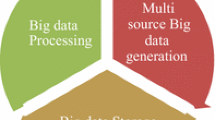Abstract
Data nowadays are extremely valuable resource. However, data are created and stored in different places with various formats and types. As a result, it is not easy and efficient for data analysis and data mining which can make profits for every aspect of social applications. To overcome this problem, data conversion is a crucial step that we have to build for linking and merging different data resources to a unified data store. In this paper, based on the intermediate data conversion model, we proposed an elastic data conversion framework for data integration system. Besides, we also performed an experiment to evaluate our model using MySQL and MongoDB.
















Similar content being viewed by others
References
Sing LC, Youwei J, Zhekang D, Dongxiao W, Yingshan T, Hong LQ, Wong Richard TK, Zobaa Ahmed F, Ruiheng W, Lei LL. A review of technical standards for smart cities. Clean Technol. 2020;20:20.
McLaren D, Agyeman J. Sharing cities: a case for truly smart and sustainable cities. New York: MIT Press; 2015.
Payam B, Maria B-E, Ralf T. Challenges for quality of data in smart cities. ACM J Data Inf Qual. 2015;20:20.
Federal Highway Administration, U.S. Department of Transportation. Data Integration Primer. https://www.fhwa.dot.gov/asset/dataintegration/if10019/dip00.cfm. (2010).
Nguyen LH, Le HT, Dang TK. A comparative study of the some methods used in constructing coresets for clustering large datasets. SN Comput Sci. 2020;1:4 (Online ISSN: 2661-8907).
Dang TK, Nguyen QP, Nguyen VS. Evaluating session-based recommendation approaches on datasets from different domains. In: Proceedings of the 6th future data and security engineering, LNCS 11814. Springer; 2019. p. 577–592.
Dang TK, Huy TM, Hoang NL. An elastic data conversion framework for data integration system. In: International conference on future data and security engineering FDSE 2020; 2020.
Ermilov I, Stadler C, Auer S. CSV2RDF: user-driven CSV to RDF mass conversion framework. In: Proceedings of the 9th international conference on semantic systems; 2013.
Rocha L, et al. A framework for migrating relational datasets to NoSQL1. Proced Comput Sci. 2015;51:2593–602.
Hyeonjeong L, Hoseok J, Miyoung S, Ohseok K. Developing a semi-automatic data conversion tool for Korean ecological data standardization. J Ecol Environ. 2017;41:11.
Vathoopan M, Brandenbourger B, George A, Zoitl A. Towards an integrated plant engineering process using a data conversion tool for AutomationML. In: IEEE international conference on industrial technology; 2017. p. 1205–10.
Paiva L, Pereira P, Almeida B, Maló P, Hyvärinen J, Klobut K, Dimitriou V, Hassan T. Interoperability: a data conversion framework to support energy simulation. Proceedings. 2017;1(7):695 ISSN: 2504-3900.
Dong XL, Srivastava D. Big data integration. San Rafael: Morgan & Claypool Publishers; 2015. p. 198.
Obitko M, Jirkovský V. Big data semantics in industry 4.0. In: Industrial applications of holonic and multi-agent systems. Lecture notes in computer science, vol 9266; 2015. p. 217–29.
Knoblock CA, Szekely P. Exploiting semantics for big data integration. AI Mag. 2015;36(1):25–38.
Information Builders. Real world strategies for big data—tackling the most common challenges with big data integration—a white paper; 2016.
Microsoft. SQL server integration services. https://docs.microsoft.com/en-us/sql/integration-services/sql-server-integration-services (2017).
Talend (2017). Talend data integration. https://www.talend.com/.
Dang TK, Huy TM, Hoang NL. Intermediate data format for the elastic data conversion framework. In: International conference on ubiquitous information management and communication IMCOM 2021; 2021.
Stack overflow insight. https://insights.stackoverflow.com/.
DB-Engines. DB-engines ranking. https://db-engines.com/en/ranking.
CKAN—The open source data portal software. https://ckan.org.
Acknowledgements
This work is supported by a project with the Department of Science and Technology, Ho Chi Minh City, Vietnam (contract with HCMUT no. 42/2019/HD-QPTKHCN, dated 11/7/2019).
Author information
Authors and Affiliations
Corresponding authors
Ethics declarations
Conflict of interest
The authors declare that they have no conflict of interest.
Additional information
Publisher's Note
Springer Nature remains neutral with regard to jurisdictional claims in published maps and institutional affiliations.
This article is part of the topical collection “Future Data and Security Engineering 2020” guest-edited by Tran Khanh Dang.
Rights and permissions
About this article
Cite this article
Dang, T.K., Huy, T.M., Dang, L.H. et al. An Elastic Data Conversion Framework: A Case Study for MySQL and MongoDB. SN COMPUT. SCI. 2, 325 (2021). https://doi.org/10.1007/s42979-021-00716-3
Received:
Accepted:
Published:
DOI: https://doi.org/10.1007/s42979-021-00716-3




